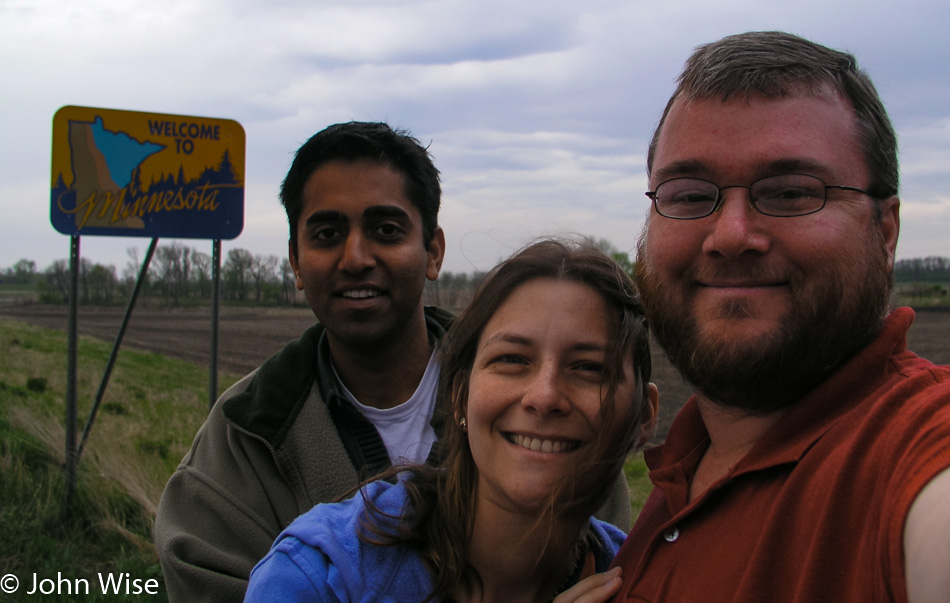
Wednesday, we’re up early and moving by 6:30 a.m. We are looking for Blanchard, where the world’s tallest TV tower, at a height of 2,063 feet, stands sentry over farms stretching in all directions. Two towers in front of us are candidates, and we head in their general direction. No signs point to the actual tower, and we can’t find a road that looks to go to the base of the closest tower. We’re not even sure if the tower closest to us is the tallest tower, as it would make sense that the tower further away that looks to be the same height should be the taller of the two. We move on.
North Dakota was an unexpectedly interesting state whose reputation is unfounded, as far as I’m concerned. I think many a state suffers poor publicity due to the interstate system that has sped travel throughout our land. As travelers have become accustomed to a harried life, they demand the same of their travels. It is this speed of convenience, though, which takes them down main highways that are punctuated with the same businesses from one exit to the next. When I find myself on these interstates, I notice the bombardment of billboards to be the first major annoyance. Second is the over-proliferation of signs pointing the traveler to various services: rest stops, lodgings, restaurants, clean restrooms, construction zones, roads that are sponsored by such and such company or family, signs dedicating roads to various causes, groups, or loved ones, and signs warning of radar, animals, workers, storms, rocks, traffic congestion, passing rules, blowing dust, and let’s not forget prisons with signs telling us not to pick up hitchhikers. Thirdly, the country looks the same if every few miles, we see another Denny’s, Chevron, Red Roof Inn, McDonald’s, Dairy Queen, Motel 6, and the famous generic truck stop.
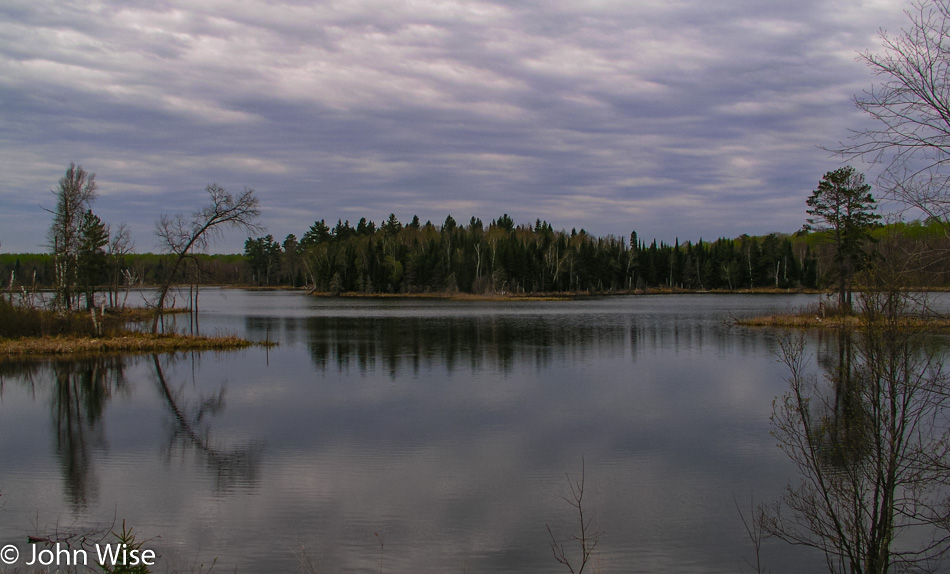
All across America, the main interstate is abuzz with information that never allows the inner explorer to see the countryside. It could be this information overload that turned Americans against the long road trip across their great country. Out on country roads, the slower roads, the roads that take you on a journey and not just a destination, is where we become familiar with the sights and sounds that give a unique character to each of these lower 48 states. North Dakota is the 44th state we’ve visited; this will not be our only visit. A day was not enough to become as familiar as we might like with North Dakota; we only scratched the surface.
Minnesota is entered while crossing the Red River; our luck has it that the “Welcome to Minnesota” sign is a short bit past the river on dry ground. Not a spot was found to snap a photo of Caroline in the water; the banks of the Red River were muddy and steep, so we might have to wait for another trip to Minnesota to find a better location to step into the muddy waters of the Red.
The change in geography is astounding as Minnesota lives up to its motto of being the Land of 10,000 Lakes. Skies began the day overcast and stayed this way for the remainder of the day. There were blue patches here and there that opened occasionally, but clouds and rain were nearly ever-present. The lakes and their frequency are also ever-present; we can’t turn a corner without another lake to our right, our left, or straight ahead.
Another landscape change made all the more dramatic was the contrast between yesterday’s wide openness and today’s sudden appearance of trees. Within but a few miles of crossing the border, the grasslands were gone and replaced by woodlands. Beaver dens and the sighting of beaver-gnawed tree trunks are easy to spot along the roadside. The small marshland areas opening to larger ponds and reflective lakes beg us to set out on a canoe and explore these beautiful waterways.
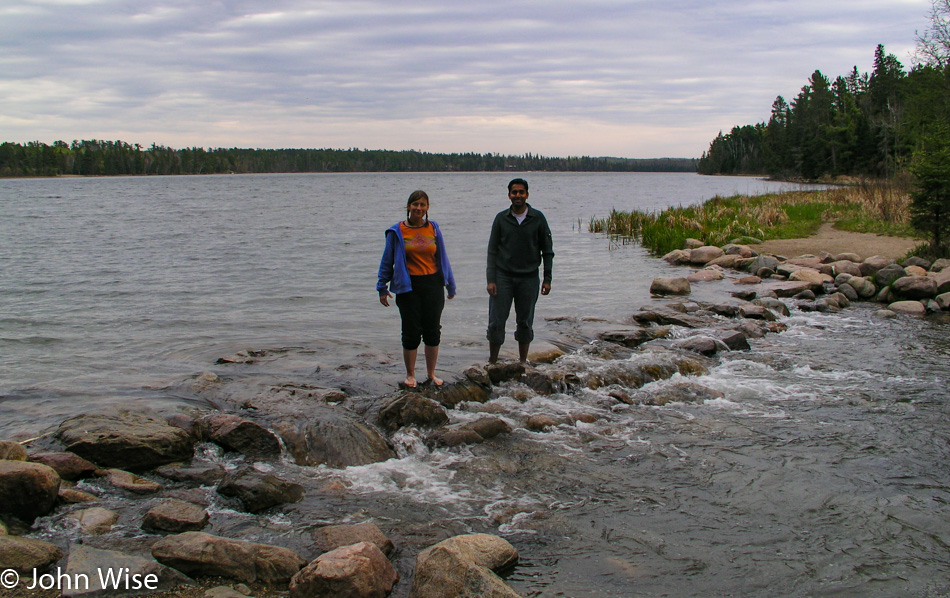
As much as we’d like to stop and see more of one or all of these wetlands, lakes, and ponds, we are on schedule to our destination this morning: Lake Itasca State Park. On our way to the fee station, we are excited about the prospect that we are about to see the headwaters of the Mississippi River. At the fee station, we get the news that the road that crosses within the boundary of the park to the north is under construction and closed to all through traffic. We stop at the visitor’s center to find our way.
Back on Highway 200, we are heading to another entrance. We cross the Mississippi River on the way in. The river narrows fast; at our first crossing, the river was about twenty-five feet across. A little further up the road, the river is only ten feet wide. The parking lot here is huge and can accommodate more than a hundred cars, but this early in the season, ours is the only car in the lot.
A well-marked trail leads in the direction of the place we are searching for, and within a few minutes, we are approaching a wooden post of some importance. It is proclaiming this to be the point of origin where the mighty Mississippi starts its flow of winding a path 2,552 miles long to the Gulf of Mexico. This trip wouldn’t be complete without Caroline crossing the Mississippi barefoot. While the water is cold, Jay is right there with her.
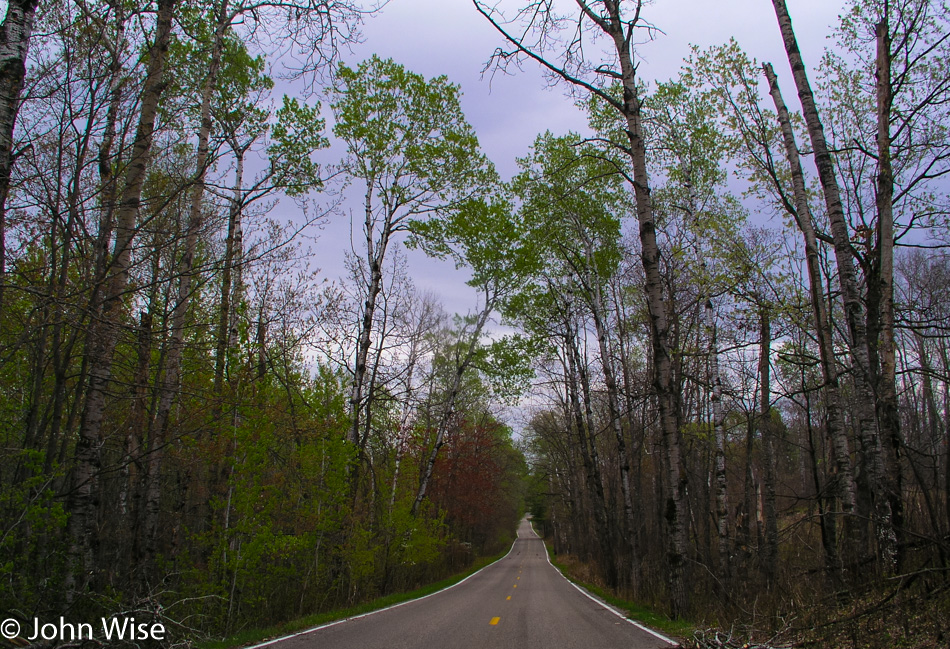
From Lake Itasca to Bemidji and further on to Grand Rapids, we follow the Great River Road. The Great River Road is a 2,069-mile-long Scenic Byway passing through five states on its way south; today, we will attempt to get lost along a 117-mile stretch. Due to construction and, at times, our poor map not showing the required level of detail, we are finding ourselves quite literally nearly lost, but not quite fully lost. Somehow, just when we think we should have gone right when we went left, and we are certain the dirt road can’t be correct, we come out of the woods and find we are right where we want to be. We needed three and a half hours to drive the 117 miles but have had many opportunities to cross the Mississippi and marvel at how fast this river picks up tributaries and starts becoming the massive river it is known as.
On the outskirts of Bemidji, nearing noon, Jay once again has a phone signal which is the first time since leaving Salt Lake City in Utah. We have to back up and park to maintain a connection so he can check voice mail and call Rinku, the girl who’s taking care of our cats and plants while we are out here in the middle of America. The cats are fine, but Rinku tells us that no one in Phoenix understands why we’ve not called already; they were getting nervous. Of course, I had forewarned everyone that we would probably be outside cell coverage until we were near Fargo or St. Paul. Obviously, no one believed me.
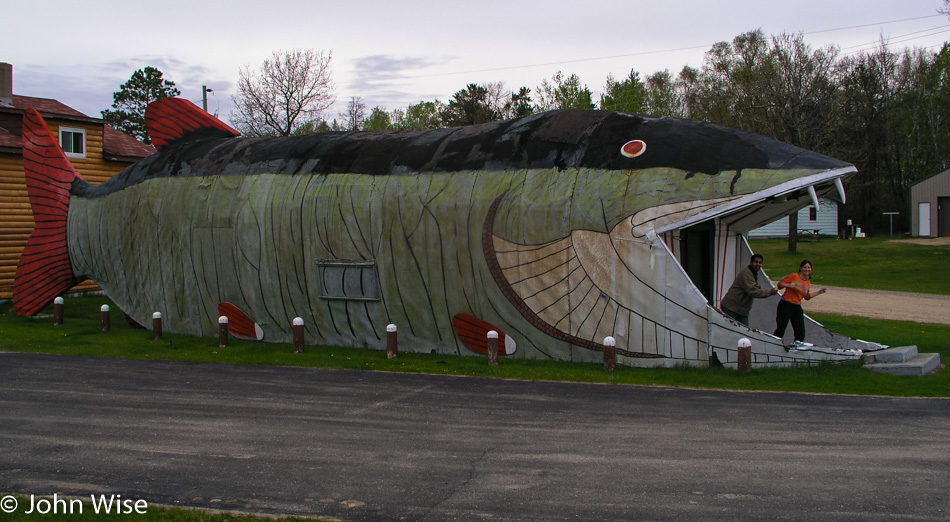
Outside of Pennington (population 52) is one of the slices of Americana that only happens right here on these shores: it’s the Big Fish Supper Club. And what better form for the building of the Big Fish Supper Club to have than that of a Big Fish? We would have eaten here for the novelty of being in the belly of the Big Fish but would have to satisfy ourselves by escaping its gaping jaws as the Big Fish wasn’t open yet.
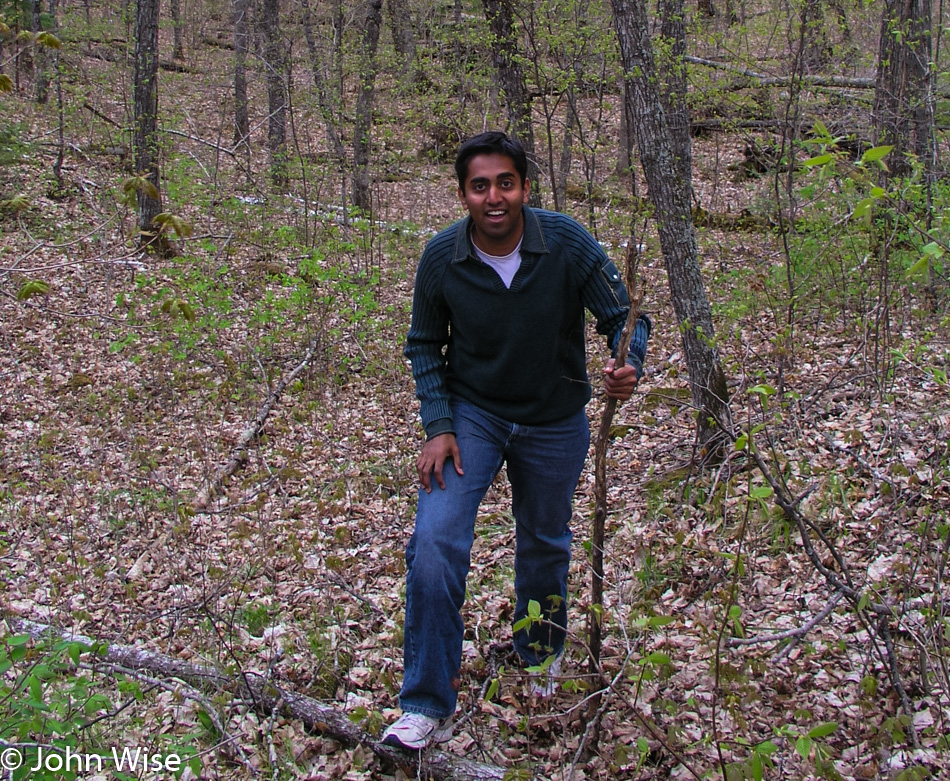
For the next hour, we listened to frogs along the roadside, passed more beaver dens, tried to figure out how to pronounce Lake Winnibigoshish, and admired the flowers along with lake after lake. Turning right onto Little Bowstring Forest Road, a one-lane dirt path through the forest, up and downhill we wind our way through the forest until we come to a lake. It’s quiet except for the wind rustling the tops of the trees and the slight sound of the lake lapping the shore.
We spend time skipping stones over the water and looking at the trees and rippling water. A canoe comes to mind again. After our arms tire of skipping stones, we take a walk in the forest to inspect its carpet of mosses, leaves, bark, and plants while trying to hold fast to the memories that might help paint our future dreams.
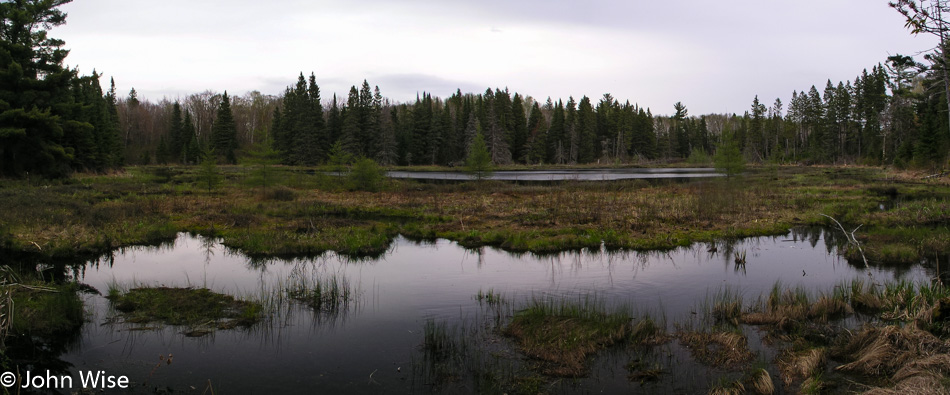
We backtracked to a smaller lake that had been passed on our way in, its waters mirroring the surrounding forest. The woods here are lush. Saplings are pushing their way up through a thicket of other new growth and flowers. The early blossoms deliver their sweet smell to hungry noses.
Is this diversity only a small sampling of the abundance of Minnesota’s forest, or have we just been lucky to fall into its more beautiful corner? And what of the coming weeks, as spring kicks into summer, will there be an explosion of colorful growth? Our short time in Minnesota will have us leaving the state with more questions than answers but will also leave us with a great desire to return to find answers to our curiosity. Reading this last line again has me thinking I’ve written just that about every state Caroline and I have visited.
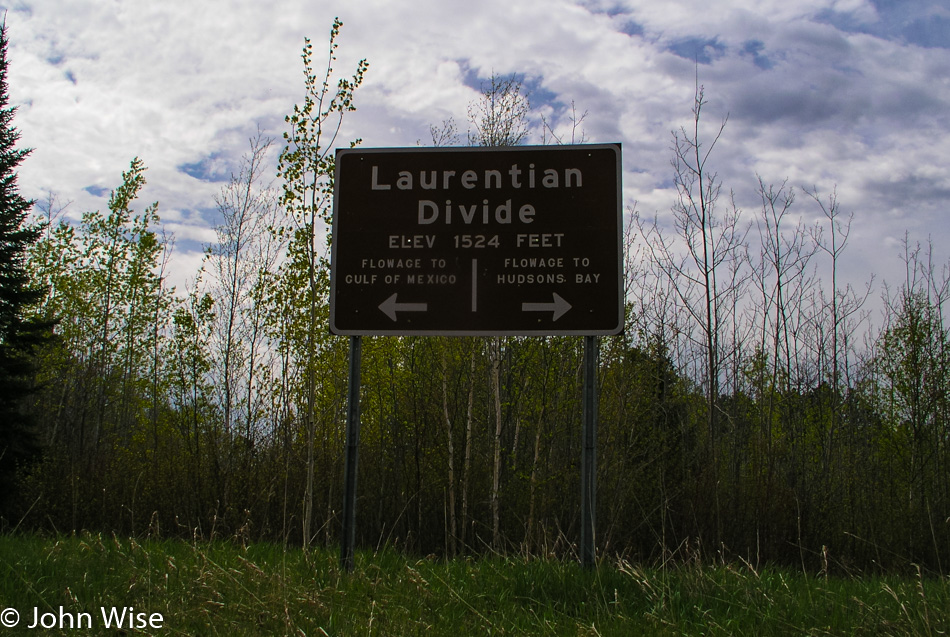
On the road again, we cross the Laurentian Divide, where from this point, the waters that flow on the left will head to the Gulf of Mexico, while to the right, the waters flow to Hudson Bay. Highway 38 takes us past Caribou Lake, one of more than 48 lakes that are here in the Marcell Township. In Marcell, we stop to take a second look at the Tender Tourist Trap, a flower shop that’s sort of an oasis inside a bigger oasis.
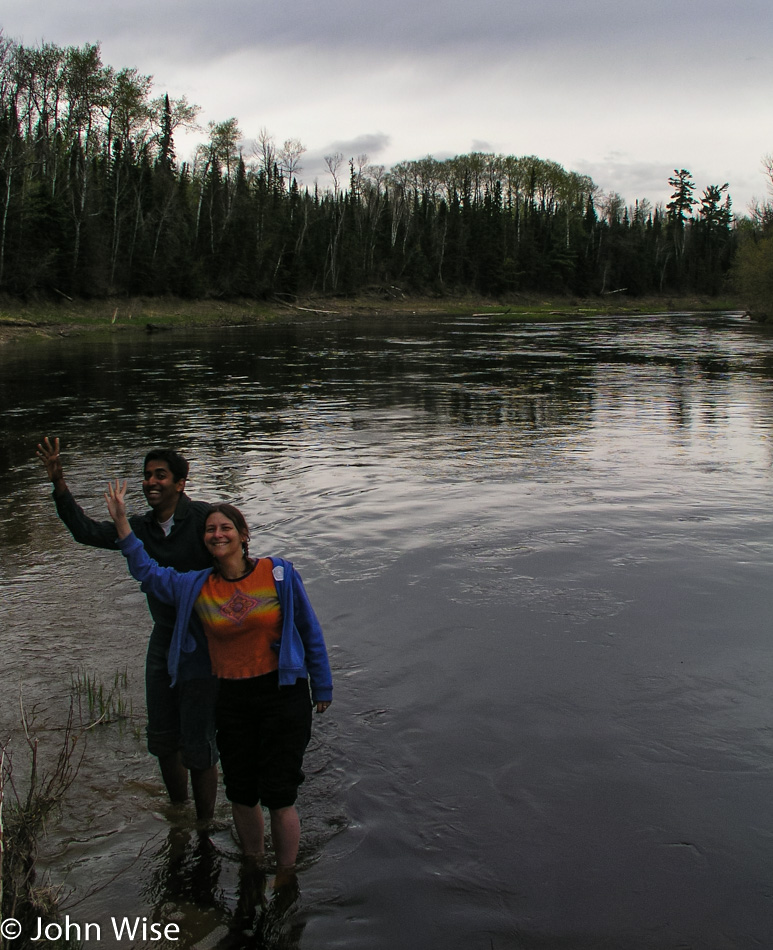
The Big Fork River is on the northern end of Highway 38, a slow, medium-sized river cutting through the forest. We stop at the Bill Counter Landing with the intent of stepping into the dark waters of the Big Fork but find the drop-off too steep to safely step in. At the Gronwoldt Landing, conditions are better but still tricky as Caroline and Jay have to step out onto a narrow gravel bar before the riverbed drops off. Wildflowers bloom under the gray sky along the rustic trail that brought us down to the river, a light rain has also begun to fall.
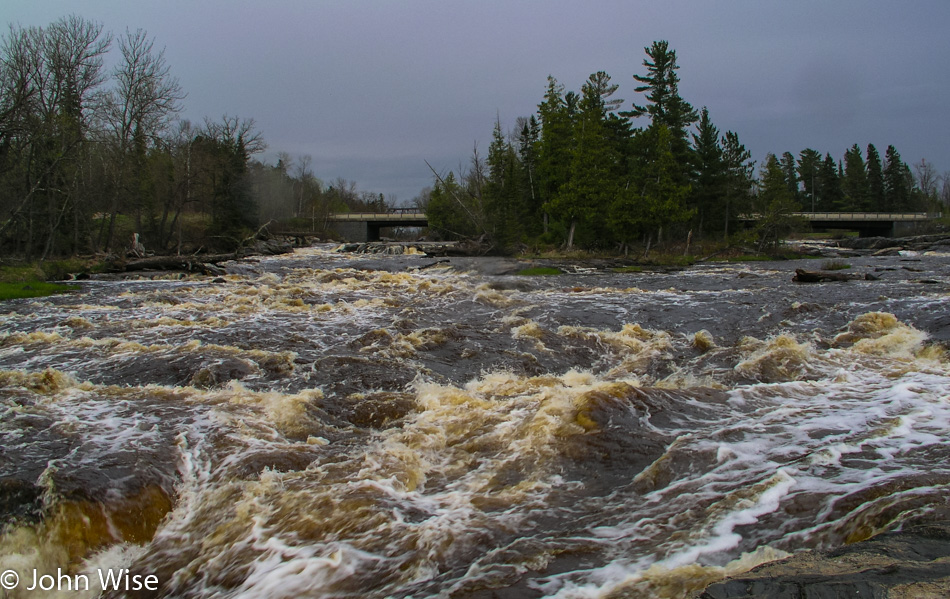
By the time we get to the Big Falls Campground near its namesake, the rain is coming down harder. Lucky for us, it’s soon letting up, allowing us to grab a better look while walking along the falls. Looking into the rushing cascade tumbling over boulders, the dark golden brown color of their tannin-stained waters rushes by just inches from where we stand. Again, we add to our notes to return to this spot to camp someday, as it is now in our top 10 coolest campground sites.
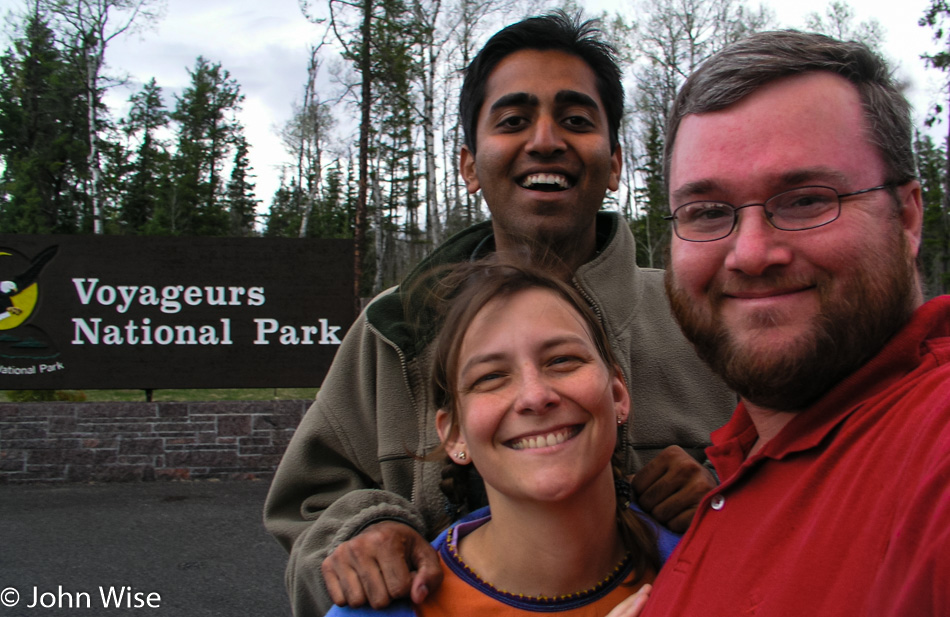
The Rat Root River is the last river we stop at before entering Voyageurs National Park. We have headed to the Ash River Section, hoping to go on a nature hike before dark. Unfortunately, the Visitors Center is closed, but a path leading to the river and Lake Kabetogama looks inviting, so we make our way to the nearest shoreline to consider dipping a toe or two in.
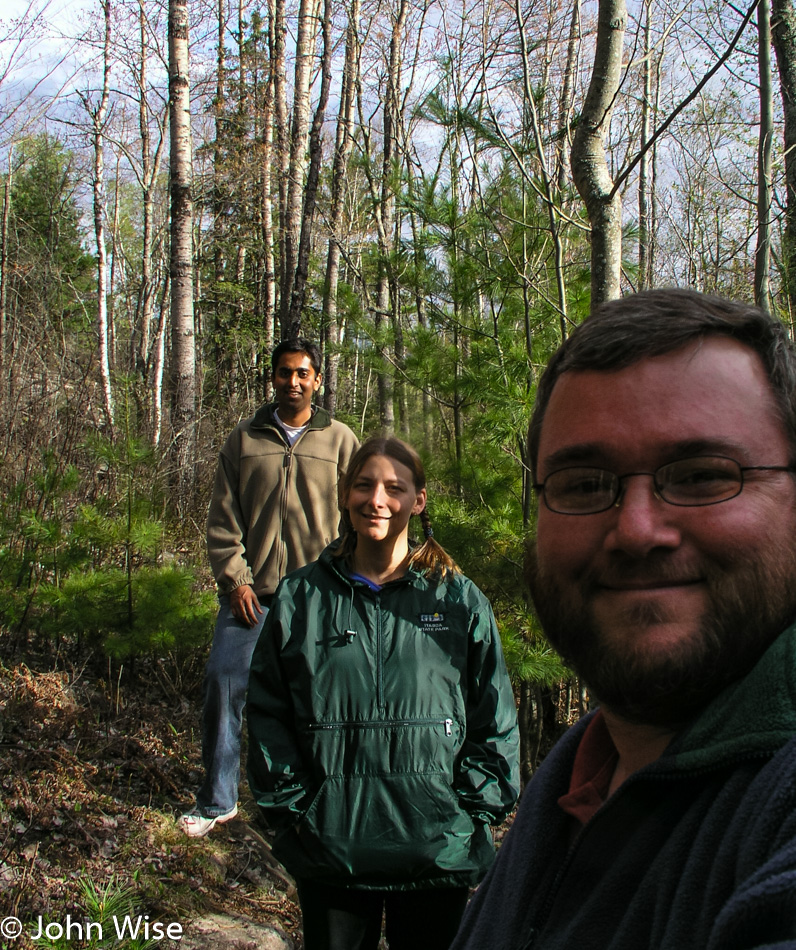
The first short segment of the path takes us to an overlook of the lake. We return a short distance to join the longer main trail. What starts as a well-marked walk quickly dissolves into a faint uncertainty. The area here along the lakeside is gorgeous with colorful foliage, gnarled tissue-like mushrooms, and even the sun makes an appearance. Hiking past fungi, fallen trees, saplings, mosses, and – a road? When we checked the map, we saw no hint of a road; well, we are all pretty sure we didn’t see a road bisecting the trail. Rather than chance taking a wrong turn just before dark, we turn back to return to the car. It’s at these moments where the Park Service would benefit the public by receiving better funding to deal with late arrivals to the National Parks.
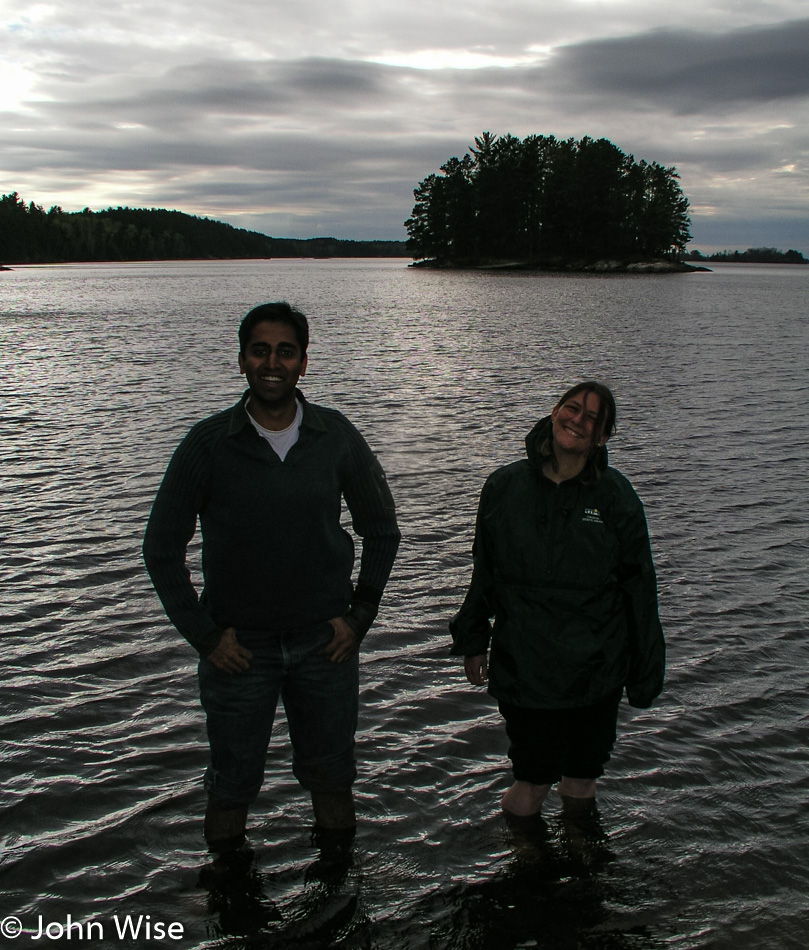
With another moment of blue sky and a little sun lighting the way, Rainy Lake was our next stop.
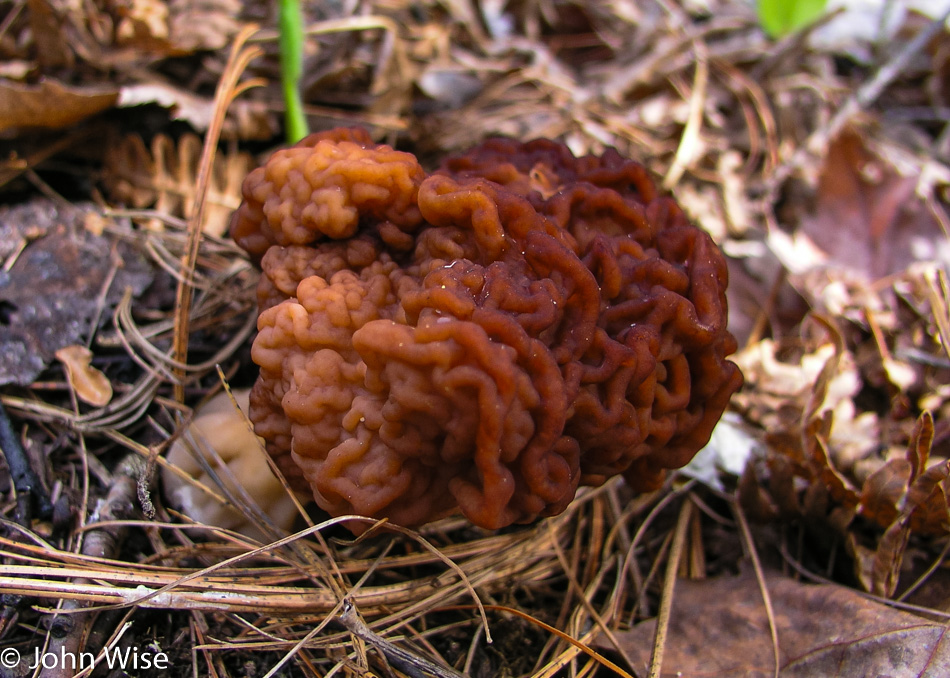
Caroline’s brain fell out of her head at some point on the trail; lucky for her, Jay found it, and being a vegetarian and all, he gave it back.
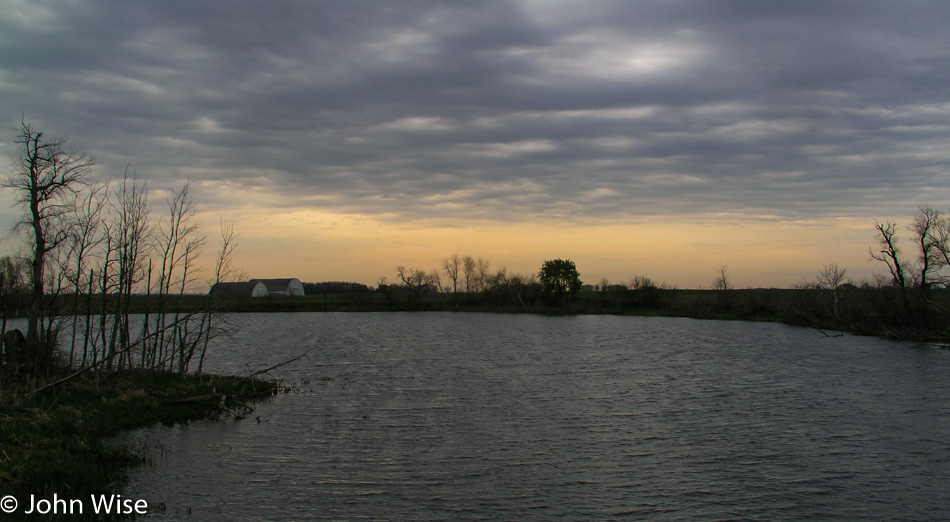
Tonight we have a date. While making reservations for the various motels, hotels, and inns we would be staying at, I spoke with Vijay at the Budget Host Inn of International Falls. I recognized the accent of the voice on the other end of the phone, and I asked if he was Gujarati. Gujarat is a northwest state in India, which is also where Jay is from. Sure enough, Vijay is Gujarati. I also asked Vijay if he would like us to bring any Indian groceries his way. Caroline and I stay at our fair share of Patel Motels across America, and one thing we’ve learned about these Indians far away from a major metropolitan area is that they have trouble getting access to Indian foods.
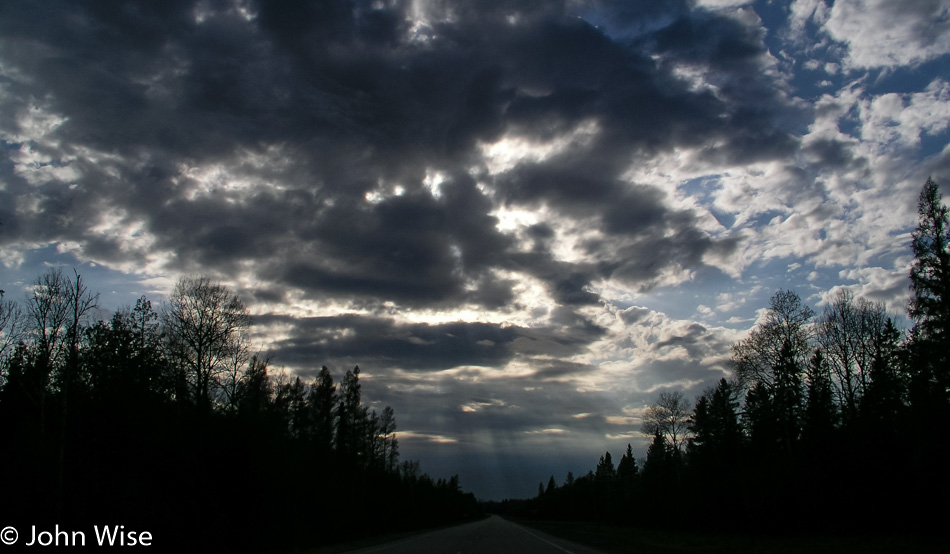
The night of our arrival, we are carrying 40 pounds of chapatti flour, vegetable, and mango pickles, which are both similar to a relish, papads, two packages of Indian tea, Parle G cookies, a few chakri which are a snack made of rice flour, chili powder, and cumin, and a package of bhel puri that is also a snack. Sadly, we couldn’t deliver Undiu, a popular spicy Gujarati vegetable dish that would have been tradeable for a free room. The Undiu wouldn’t have survived the six days it took us to get here.
For delivering the groceries, Vijay very graciously invited us in for a hot dinner. Vijay serves us Indian and Chinese food, and for the first time in nearly a week, we get to sit down and have dinner in an at-home setting.
Leaving this feast and walking back to our rooms Caroline, Jay, and I were struck by the luck we’ve had on this trip. We appreciate this moment as one of our great fortunes and will not soon forget the hospitality offered to us for the favor we delivered tonight.
Early to bed and early to rise. Caroline took this to an extreme tonight. She woke after hearing the alarm shake her from sleep and jumped into the shower. Quietly, she sifted through her clothes to find the day’s outfit, and shortly before waking me to do the same, she was overcome by a strange feeling. It seemed awfully dark outside. She checked the clock again – it was MIDNIGHT.